-
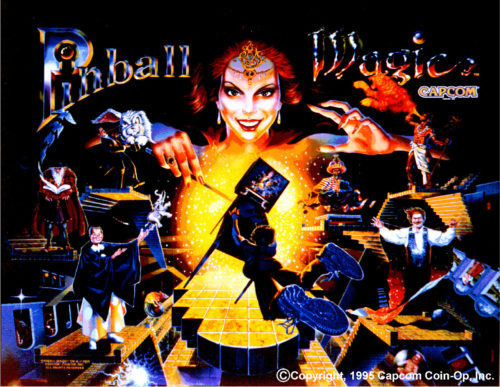
-
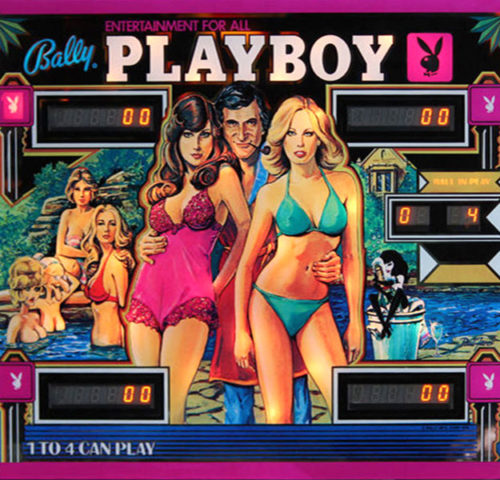 This solid-state game was very popular when it was released and has a lot of smooth shots to complete. It was designed by Jim Patla with artwork by Paul Faris. Production run was 18,250 units. This pre-speaking pinball has Hugh Hefner on its backglass with Bunny Sondra Theodore posing. At the top of the game are four rollover lanes, which advance when hit to a special and advance the bonuses and grotto award. Hitting the five Bunny targets also advance a feature to win extra balls and specials. A unique kickback lane advances with every entrance into it. A five-pack of drop targets also advance certain features on the game. If 20,000 points are made on the bonus system, this point count is carried over to all remaining balls and then some. The nicest shot on the game is going up the right side from the flipper and looping the ball into the grotto. The sound originates from the old TV show “Playboy After Dark.”
This solid-state game was very popular when it was released and has a lot of smooth shots to complete. It was designed by Jim Patla with artwork by Paul Faris. Production run was 18,250 units. This pre-speaking pinball has Hugh Hefner on its backglass with Bunny Sondra Theodore posing. At the top of the game are four rollover lanes, which advance when hit to a special and advance the bonuses and grotto award. Hitting the five Bunny targets also advance a feature to win extra balls and specials. A unique kickback lane advances with every entrance into it. A five-pack of drop targets also advance certain features on the game. If 20,000 points are made on the bonus system, this point count is carried over to all remaining balls and then some. The nicest shot on the game is going up the right side from the flipper and looping the ball into the grotto. The sound originates from the old TV show “Playboy After Dark.” -
 The last game of ’65 is a two-player add-a-ball game. It was designed by Ed Krynski with art by Roy Parker. A replay model also exists by the name of Paradise. Production run was a meager 265 units; the replay game had 2,100 units fabricated. The animated backglass on this game contains a dancing hula girl. When extra balls are won, they are represented as beach balls on the backglass. If you complete the sequence A, B, C, and D in that order, a free ball is your reward. Roto lights advance and indicate the value of the kickout holes. Points set by the operator award free balls also. An interesting guide rail is on either side of the flipper drains, a variation on a theme. This game is very rare due to its low production numbers.
The last game of ’65 is a two-player add-a-ball game. It was designed by Ed Krynski with art by Roy Parker. A replay model also exists by the name of Paradise. Production run was a meager 265 units; the replay game had 2,100 units fabricated. The animated backglass on this game contains a dancing hula girl. When extra balls are won, they are represented as beach balls on the backglass. If you complete the sequence A, B, C, and D in that order, a free ball is your reward. Roto lights advance and indicate the value of the kickout holes. Points set by the operator award free balls also. An interesting guide rail is on either side of the flipper drains, a variation on a theme. This game is very rare due to its low production numbers. -
 Gameplay of Pole Position. In this game, the player controls a Formula One race car, and has to complete a time trial lap within a certain amount of time (between 90 and 120 seconds) to qualify for an F1 race at the Fuji Racetrack. After qualifying, the player races against seven other CPU-controlled cars in a championship race (but if he or she does not qualify, the car will stay on the track until the timer runs out). The player must also avoid going off the road so that he or she will not crash into the billboards. Pole Position was the first racing video game to feature a track based on a real racing circuit. It was also the first game to feature a qualifying lap, requiring the player to complete a time trial before they can compete in Grand Prix races. Once the player has qualified, they must complete the race in the time allowed, avoiding collisions with CPU-controlled opponents and billboards along the sides of the track. The game’s publisher Atari publicized the game for its “unbelievable driving realism” in providing a Formula 1 experience behind a racing wheel. The game’s graphics featured full-color landscapes with scaling sprites, including race cars and other signs, and a pseudo-3D, third-person, rear perspective view of the track, with its vanishing point swaying side to side as the player approaches corners, accurately simulating forward movement into the distance.
Gameplay of Pole Position. In this game, the player controls a Formula One race car, and has to complete a time trial lap within a certain amount of time (between 90 and 120 seconds) to qualify for an F1 race at the Fuji Racetrack. After qualifying, the player races against seven other CPU-controlled cars in a championship race (but if he or she does not qualify, the car will stay on the track until the timer runs out). The player must also avoid going off the road so that he or she will not crash into the billboards. Pole Position was the first racing video game to feature a track based on a real racing circuit. It was also the first game to feature a qualifying lap, requiring the player to complete a time trial before they can compete in Grand Prix races. Once the player has qualified, they must complete the race in the time allowed, avoiding collisions with CPU-controlled opponents and billboards along the sides of the track. The game’s publisher Atari publicized the game for its “unbelievable driving realism” in providing a Formula 1 experience behind a racing wheel. The game’s graphics featured full-color landscapes with scaling sprites, including race cars and other signs, and a pseudo-3D, third-person, rear perspective view of the track, with its vanishing point swaying side to side as the player approaches corners, accurately simulating forward movement into the distance. -
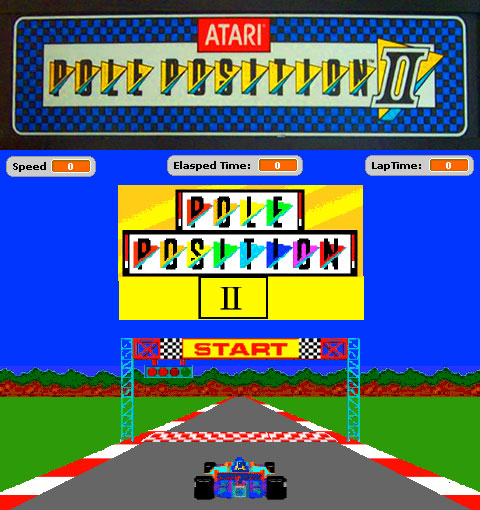
-
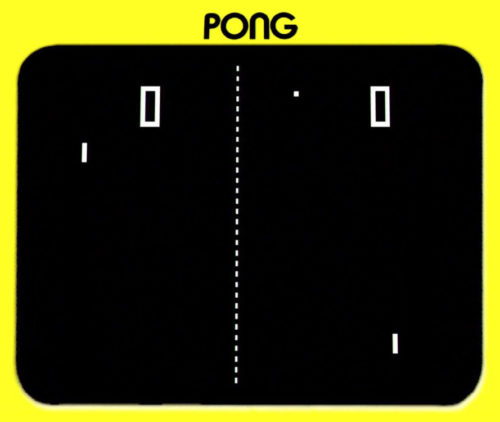 Atari PONG was released in June 1972 and is the first commercially successful video game and is based on a simple two-dimensional graphical representation of a tennis-like game. Players use paddles to hit a ball back and forth on a black and white screen. Pong was the first game developed by Atari Inc., by Nolan Bushnell and Ted Dabney. Pong (marketed as PONG) is one of the earliest arcade video games, and is a tennis sports game featuring simple two-dimensional graphics. The player controls an in-game paddle by moving it vertically across the left side of the screen, and can compete against either a computer controlled opponent or another player controlling a second paddle on the opposing side. Players use the paddles to hit a ball back and forth. The aim is for a player to earn more points than the opponent; points are earned when one fails to return the ball to the other. Pong consistently earned four times more revenue than other coin-operated machines, which resulted in an increase in the number of orders Atari received. This provided Atari with a steady source of income; the company sold the machines at three times the cost of production. By 1973, the company had filled 2,500 orders, and, at the end of 1974, sold more than 8,000 units.[20] The arcade cabinets have since become collector’s items with the cocktail-table version being the rarest. Atari eventually sold more than 35,000 units, however, many more imitations were produced by competitors.
Atari PONG was released in June 1972 and is the first commercially successful video game and is based on a simple two-dimensional graphical representation of a tennis-like game. Players use paddles to hit a ball back and forth on a black and white screen. Pong was the first game developed by Atari Inc., by Nolan Bushnell and Ted Dabney. Pong (marketed as PONG) is one of the earliest arcade video games, and is a tennis sports game featuring simple two-dimensional graphics. The player controls an in-game paddle by moving it vertically across the left side of the screen, and can compete against either a computer controlled opponent or another player controlling a second paddle on the opposing side. Players use the paddles to hit a ball back and forth. The aim is for a player to earn more points than the opponent; points are earned when one fails to return the ball to the other. Pong consistently earned four times more revenue than other coin-operated machines, which resulted in an increase in the number of orders Atari received. This provided Atari with a steady source of income; the company sold the machines at three times the cost of production. By 1973, the company had filled 2,500 orders, and, at the end of 1974, sold more than 8,000 units.[20] The arcade cabinets have since become collector’s items with the cocktail-table version being the rarest. Atari eventually sold more than 35,000 units, however, many more imitations were produced by competitors. -

-
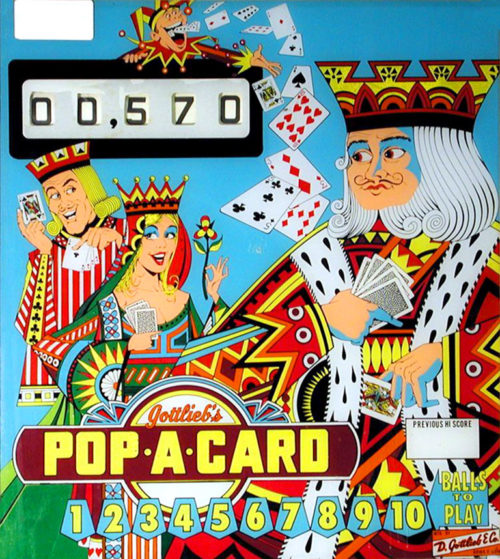 Gottlieb Pop-A-Card was another classic ‘70s playfield designed by Ed Krynski with artwork by Gordon Morison. Only 825 of these units were made. The replay version of the game was called Drop–A-Card which, as usual, was a much higher produced machine. The open playfield of this game gives ample room for scoring the three banks of drop targets. To win free balls with this game, you have to either complete the 2, 3, 4, and 5 targets, or the 6, 7, 8, and 9 targets…or the 10, J, Q, K, and Ace targets. The first two options light the wow feature to award free balls during that ball in play. If you hit the 10 thru Ace targets to completion, four rollovers light up to score extra balls. Of course, score is another way to score more balls.
Gottlieb Pop-A-Card was another classic ‘70s playfield designed by Ed Krynski with artwork by Gordon Morison. Only 825 of these units were made. The replay version of the game was called Drop–A-Card which, as usual, was a much higher produced machine. The open playfield of this game gives ample room for scoring the three banks of drop targets. To win free balls with this game, you have to either complete the 2, 3, 4, and 5 targets, or the 6, 7, 8, and 9 targets…or the 10, J, Q, K, and Ace targets. The first two options light the wow feature to award free balls during that ball in play. If you hit the 10 thru Ace targets to completion, four rollovers light up to score extra balls. Of course, score is another way to score more balls. -
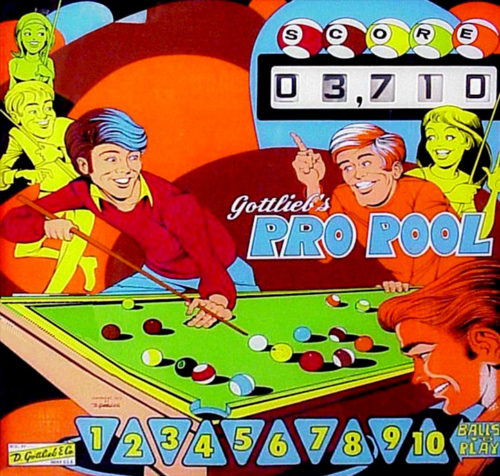 Pro Pool originated in December with 800 units being fabricated. This add-a-ball machine was designed by Ed Krynski with artwork by Gordon Morison. Two replay versions of the game were also made: a two-player version called Big Shot and a four-player version called Hot Shot. Obviously the theme of this game is the game of pool. The playfield is symmetrical and the way to win extra balls is by completing the left and/or right drop target battery. Doing so will lift the left and/or right wow rollovers for this award. The drop targets reset once the sequences are completed. Of course, an operator-adjusted score is another way to score a couple of balls. Back in the ‘70s, multiple balls or replays could be achieved on the game. Today, one free game on a current solid-state game is the common win. Operators have made it harder to achieve free games today as free games yield no income and only result in down time for the machine to earn coins in the till.
Pro Pool originated in December with 800 units being fabricated. This add-a-ball machine was designed by Ed Krynski with artwork by Gordon Morison. Two replay versions of the game were also made: a two-player version called Big Shot and a four-player version called Hot Shot. Obviously the theme of this game is the game of pool. The playfield is symmetrical and the way to win extra balls is by completing the left and/or right drop target battery. Doing so will lift the left and/or right wow rollovers for this award. The drop targets reset once the sequences are completed. Of course, an operator-adjusted score is another way to score a couple of balls. Back in the ‘70s, multiple balls or replays could be achieved on the game. Today, one free game on a current solid-state game is the common win. Operators have made it harder to achieve free games today as free games yield no income and only result in down time for the machine to earn coins in the till. -
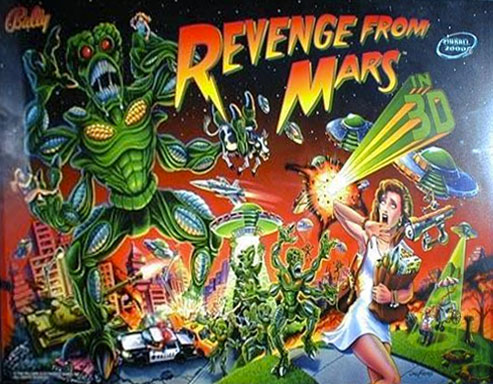 This is the next-to-last machine Williams made under the Bally moniker and the first game made to “reinvent” pinball in a last-ditch effort to save Williams from ceasing pinball manufacturing. 6,878 machines were made. George Gomez designed the new platform with Greg Freres and John Youssi designing the art package. This is Star Wars; the last games from Williams were the most technologically advanced games pinball has ever known. The incorporation of a reflecting video monitor with interactive playfield video feedback is revolutionary. The top of the playfield is mostly hidden from view except for a few selectively placed spots which light on occasion. This machine consists of nine different modes which must be conquered to proceed to the ultimate mode, that being the destruction of Mars. A very different game that sold well. However, Williams pulled the plug on pinball and thereafter focused on slot machines.
This is the next-to-last machine Williams made under the Bally moniker and the first game made to “reinvent” pinball in a last-ditch effort to save Williams from ceasing pinball manufacturing. 6,878 machines were made. George Gomez designed the new platform with Greg Freres and John Youssi designing the art package. This is Star Wars; the last games from Williams were the most technologically advanced games pinball has ever known. The incorporation of a reflecting video monitor with interactive playfield video feedback is revolutionary. The top of the playfield is mostly hidden from view except for a few selectively placed spots which light on occasion. This machine consists of nine different modes which must be conquered to proceed to the ultimate mode, that being the destruction of Mars. A very different game that sold well. However, Williams pulled the plug on pinball and thereafter focused on slot machines. -
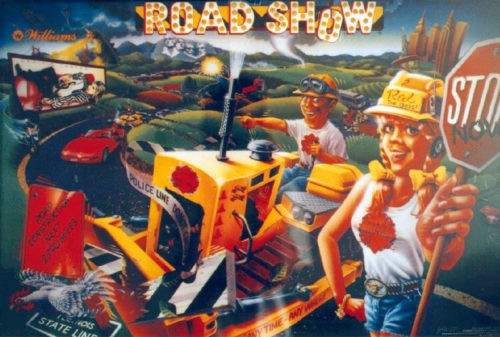 This wide-body mouthful of a game incorporates not one talking head (like in the game “Funhouse”) but two…and they talk to each other during game play. Williams made around six wide-body machines such as this so as to incorporate more real estate space for playfield action and toys. They went by the moniker of the “Super Pin.” This machine was designed by Pat Lawlor and inked by John Youssi. 6,259 were made. In a nutshell, the object of this machine is to cross the US to achieve the ultimate jackpot round. Each time you hit Ted, the day of the week advances in front of him. When you reach Friday, it’s payday. This starts the three-ball multiball series. The jackpot is achieved when you shoot a ball into sleeping Ted’s mouth! Much mayhem, a vibrating motor, two plunger shots, and a lot of characters pop up to taunt you on your way across the country. Country singer Carlene Carter is the voice of Red.
This wide-body mouthful of a game incorporates not one talking head (like in the game “Funhouse”) but two…and they talk to each other during game play. Williams made around six wide-body machines such as this so as to incorporate more real estate space for playfield action and toys. They went by the moniker of the “Super Pin.” This machine was designed by Pat Lawlor and inked by John Youssi. 6,259 were made. In a nutshell, the object of this machine is to cross the US to achieve the ultimate jackpot round. Each time you hit Ted, the day of the week advances in front of him. When you reach Friday, it’s payday. This starts the three-ball multiball series. The jackpot is achieved when you shoot a ball into sleeping Ted’s mouth! Much mayhem, a vibrating motor, two plunger shots, and a lot of characters pop up to taunt you on your way across the country. Country singer Carlene Carter is the voice of Red. -
